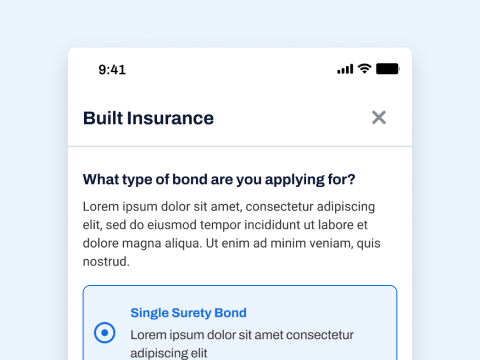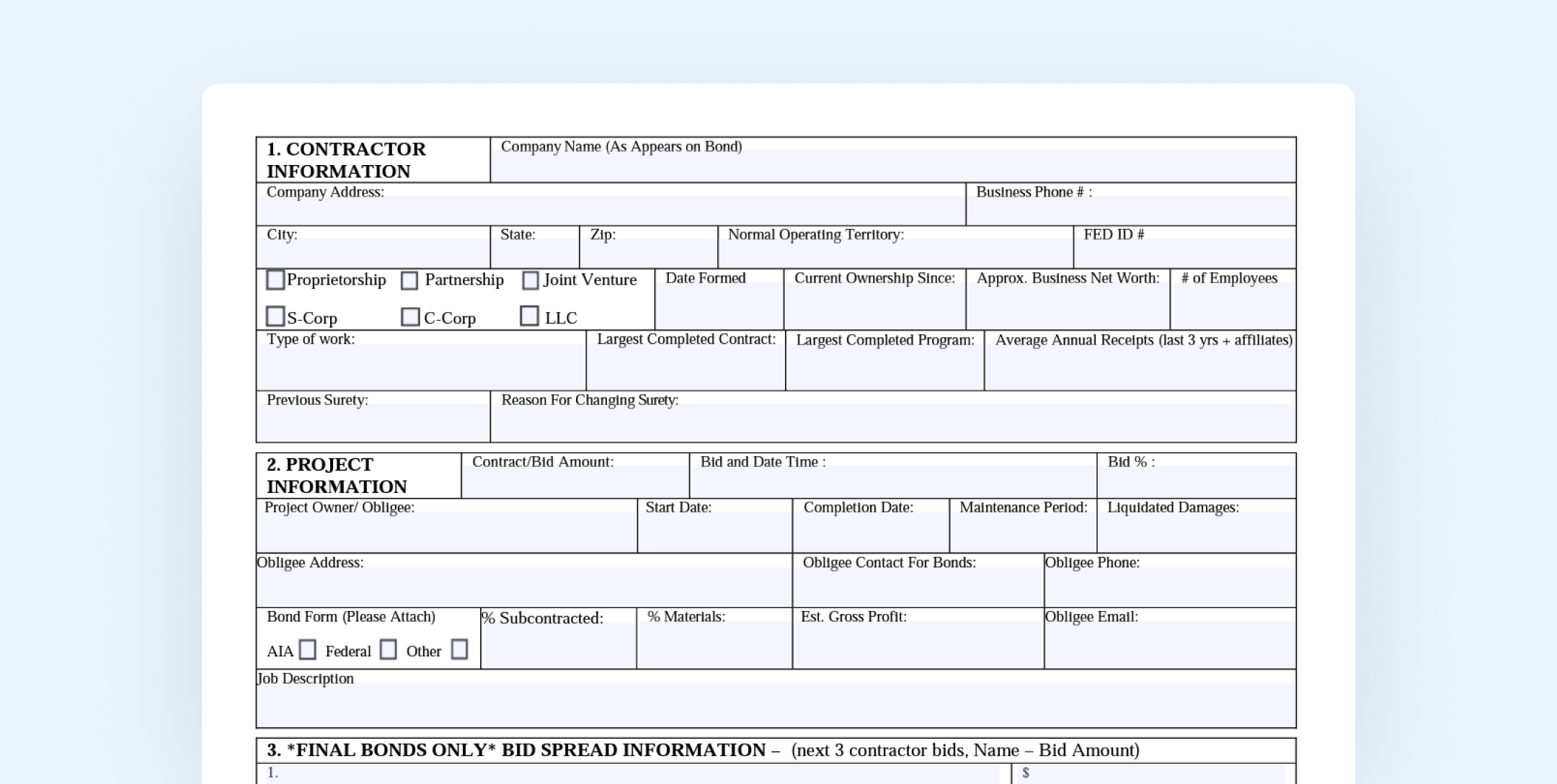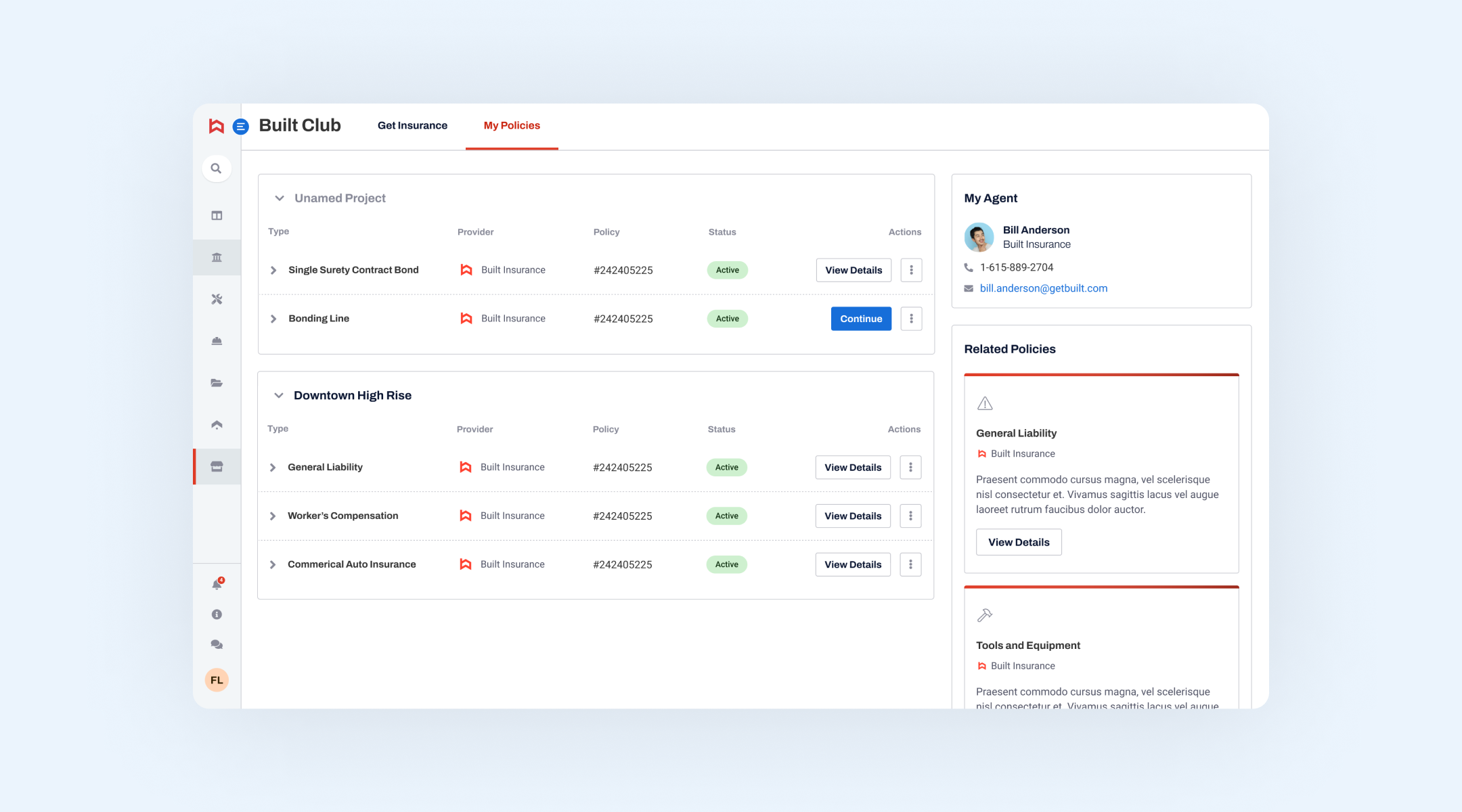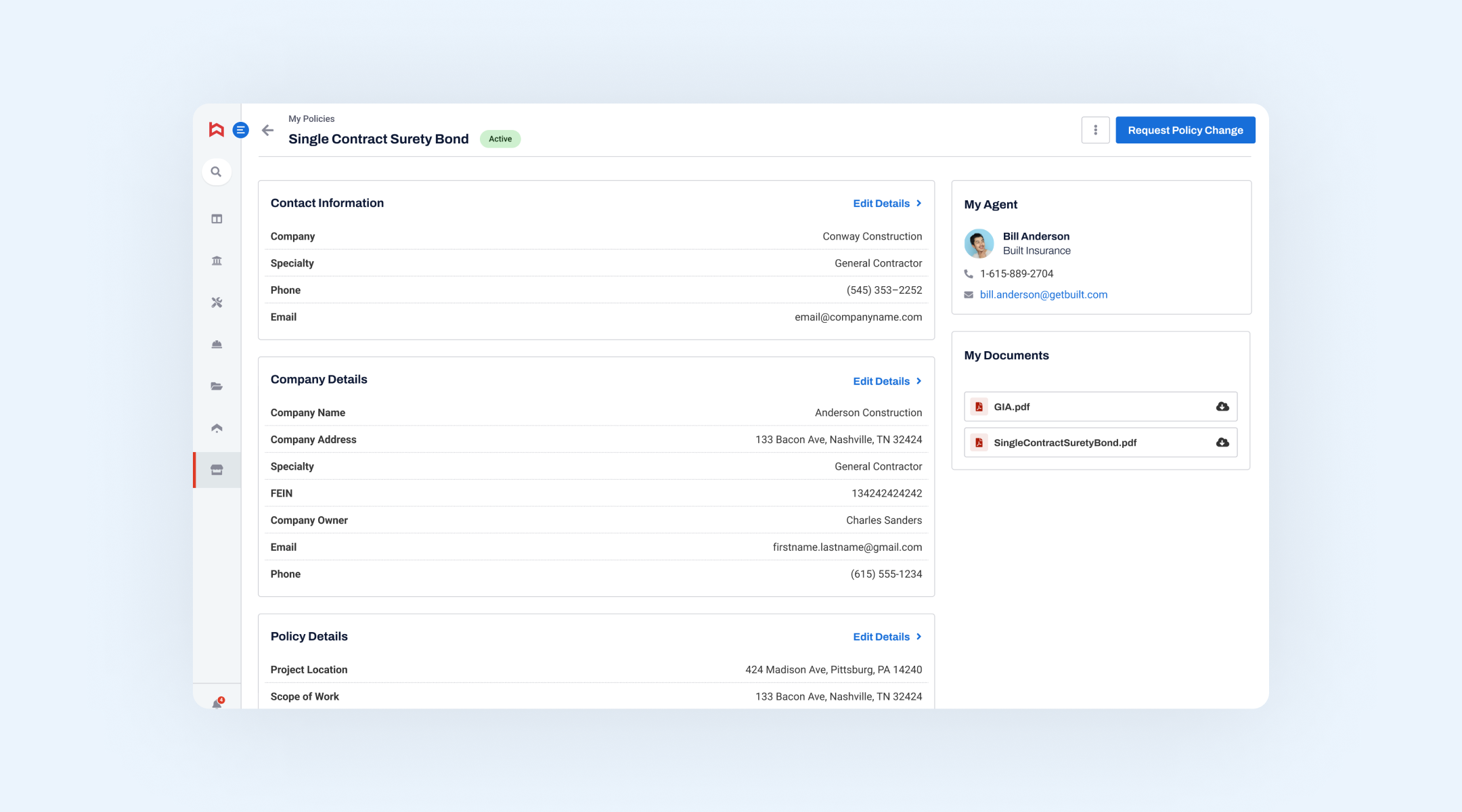Build towards a marketplace where contractors could purchase supplies, rent machinery and get insurance to spend smarter, mitigate risk and reduce waste.
Company
Built Technologies

Construction is plagued with bad information and risk, making compliance and insurance crucial to securing a project contract. Project owners want more predictability and visibility into the vendors they work with, but offline compliance tracking makes this a tedious effort. Obtaining insurance in construction is cumbersome and the lack of automation makes it slow for all parties involved. Acquiring a surety bond, for instance, is more complicated than obtaining a mortgage, so it was important we made this insurance experience simple and flexible for both applicants and agents.

Figure 2: Example Offline Application
As we expanded into the construction market we had the advantage of data to provide a personalized marketplace to our range of users. Both supplies and insurance were ripe with opportunity since we could leverage data to offer better rebates, premiums and expedite the purchase process. Considering the vast scope of opportunity in creating a marketplace, insurance was our focus for MVP. This market segment alone was complex as there are a broad set of policy types we could offer including general liability and builder’s risk insurance. To set a strong foundation for future policies, leadership decided to focus on surety bonds as they were the most advanced and outdated form of insurance. Establishing a solution for this type would help us set the framework for other policy types and allow us to leverage a third-party provider for any other policies as we continued to scale.

Figure 2: Example Offline Application
As we expanded into the construction market we had the advantage of data to provide a personalized marketplace to our range of users. Both supplies and insurance were ripe with opportunity since we could leverage data to offer better rebates, premiums and expedite the purchase process. Considering the vast scope of opportunity in creating a marketplace, insurance was our focus for MVP. This market segment alone was complex as there are a broad set of policy types we could offer including general liability and builder’s risk insurance. To set a strong foundation for future policies, leadership decided to focus on surety bonds as they were the most advanced and outdated form of insurance. Establishing a solution for this type would help us set the framework for other policy types and allow us to leverage a third-party provider for any other policies as we continued to scale.

Figure 3: Product Architecture
Our PM held a storyboarding session with myself and engineers to talk through technical constraints and define the scope of work needed for MVP. I then worked with product and our in-house insurance broker to gather information required to qualify for a surety bond. There were various types of surety bonds, including single contract bonds and bonding lines, and different coverage tiers so the application flow split in serveral areas. Our PM documented these data segments in Excel, which allowed me to easily analyze information patterns and quickly begin design.

Our PM held a storyboarding session with myself and engineers to talk through technical constraints and define the scope of work needed for MVP. I then worked with product and our in-house insurance broker to gather information required to qualify for a surety bond. There were various types of surety bonds, including single contract bonds and bonding lines, and different coverage tiers so the application flow split in serveral areas. Our PM documented these data segments in Excel, which allowed me to easily analyze information patterns and quickly begin design.
Figure 3: Product Architecture

Application Design Given the information density associated with insurance, our approach was to break a complex workflow into a simple, multi-step process. Since applications for surety could easily surface 50+ questions we wanted to give users the flexibility to save and exit so they could continue at a later time. The workflow was mostly a form-based experience with question sets. Some pages involved more advanced configurations such as adding contact records or custom list items. Due to the length of the flow and amount of pages involved, we offered a summary slideout panel to help users track their answers. There were multiple policy types to be mindful of, so I created a modular framework that could easily be repurposed for future types including general liability and builder’s risk insurance. The mult-step modal experience became an established pattern in our design system and offered us the ability to reuse in other areas of our platform involving complex workflows.



Our insurance broker and stakeholders were impressed with our team’s ability to quickly deliver an MVP solution over the course of a few months. Our broker mentioned that outside of having an online experience, a key advantage of our solution was that it was simple to use and provided a strong foundation for future offerings. Instead of relying on phone calls and emails they now have an easy-to-use online experience that will be a huge time saver and stress reliever for both their staff and applicants. For the next steps, our PM and I were also working with customers to collect sentiments from our current experience and understand needs as we broadened our insurance offerings. We also planned to work closely with engineering to fully automate the application review process and integrate with both our payment and compliance solutions to make this a seamless experience for all involved.
